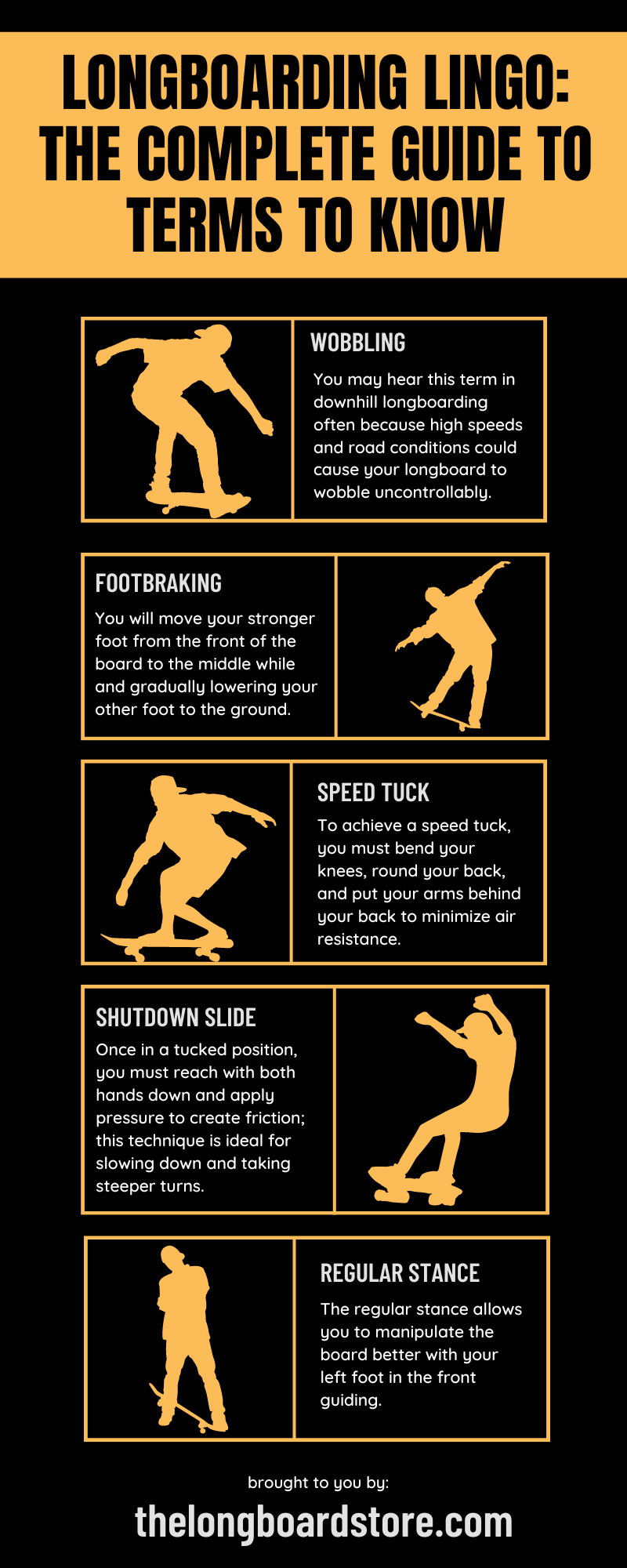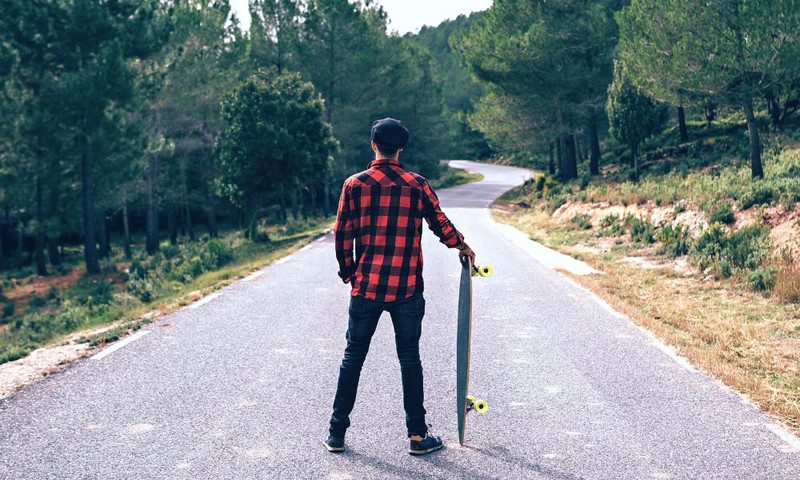Any time you engage in a new hobby, you need to understand the terminology so that you can learn from others and grow your skills. In the skating world, many use terms to describe unique moves, techniques, and scenarios that you will need to understand if you want to join in.
Knowing these terms allows you to do more than express yourself—using the right language also provides a way to connect with others in the community. The longboarding community is very close, but most are always willing to help and will welcome anyone who has a passion for the sport.
This complete guide of terms to know for longboarding will help you quickly pick up on what’s happening in instructions, advice, and longboarding stories. The more you use the lingo, the more natural it will become!
Regular Stance
As you start longboarding, you will need to determine the type of stand you feel the most comfortable with. There are two different types: regular and goofy.
The regular stance allows you to manipulate the board better with your left foot in the front guiding. Riding goofy involves keeping your right foot forward as you manipulate the board and shift your weight. Finding what works best for you will help you achieve your longboarding goals in less time. Additionally, if someone asks which you prefer, you will know what to say.
Heelside Turn
Manipulation of your longboard is essential for activities such as downhill longboarding, freestyling, and longboard dancing, and there are basic skills you’ll need to engage in these forms of riding. A heelside turn involves shifting your weight to the back leg and placing your foot on the back edge of the board to lift the tip, allowing you to change direction.
This move is important because it will allow you to connect to more difficult skills, which with time, you will learn how to master. Understanding what these terms look like in action will help you make quick corrections, especially when someone is teaching you new tricks and giving verbal instructions.
Wheelbiting
This term means that the wheels on your longboard are constantly in contact with the base of your board, which could cause damage and influence manipulation. There are various ways to prevent wheelbiting; two main actions are to tighten your trucks or wax the bottom side of your longboard.
Monitoring for this issue ensures you can catch it early on, allowing you to prevent damage to your board. The trucks on your longboard are the devices holding the wheels together, where having them looser will make it easier to turn and shift your weight, and tighter will make your board stiffer.
Wobbling
You may hear this term in downhill longboarding often because high speeds and road conditions could cause your longboard to wobble uncontrollably. Losing control of your longboard at these speeds is dangerous, which is why you must always wear proper equipment.
This term is also very popular with off-roaders because the rough conditions can lead drivers to disengage their wheel systems, causing the vehicle to vibrate if done incorrectly. Similarly, with longboards, regaining control can minimize the issue. If you experience wobbling, you must put more weight on your front foot to take control of the nose and keep it steady.
Footbraking
Just like how falling is part of the learning process, learning to break will be too. Braking correctly will save you from unwanted situations and give you more control. In most cases, you will move your stronger foot from the front of the board to the middle while and gradually lowering your other foot to the ground.
This technique is necessary for downhill longboarding because it will help you control your board for turns and steeper roads. A drop-through longboard deck has the best dimensions and features to help you learn this essential activity; learning the parts of the deck is also important for new learners.
Speed Tuck
You will build up speed when downhill longboarding, allowing you to feel the adrenaline rush through your veins. If you want to gain more speed, it is essential that you learn how to speed tuck. Start by assuming the position and learning control.
To achieve a speed tuck, you must bend your knees, round your back, and put your arms behind your back to minimize air resistance. This posture will quickly increase your speed; it is safer to initially practice this technique on small hills and safer roads.
Shutdown Slide
Speed tuck and a shutdown slide are two skills that complement each other because you must assume a similar position to achieve the desired goal. Learning to tuck properly will open the door for new opportunities, especially with downhill longboarding.
A shutdown slide will help you slow down after reaching a higher speed from tucking; you must wear slide gloves because you will come in contact with the pavement. Once in a tucked position, you must reach with both hands down and apply pressure to create friction; this technique is ideal for slowing down and taking steeper turns.
Longboarding Freestyling
Freestyling is one of the most popular styles for longboarding because you can perform it almost anywhere with the right conditions, and it will help you commute and have fun. Freestyling is about connecting tricks and using outdoor elements such as steps and paved paths to enhance your experience.
Understanding longboarding lingo is essential for picking up new tricks, and the glossary of terms can go into deeper detail depending on your main areas of interest. Still, there are some general skating terms you’ll hear across board types and riding styles. Skills like a pop shove it, a pivot, or a kickflip are common for riders who frequently freestyle, while speed tucking is a term more specific for downhill longboarding.
Finding and selecting the style of longboard you like will help you develop your skills, and learning from more experienced riders will greatly help. The more you are around people in the same community, the quicker you will learn general terms and more specific ones that people use as they go.
Find your tribe and a board that matches your needs, and you will quickly transform your lifestyle into a more fun and exciting one.


